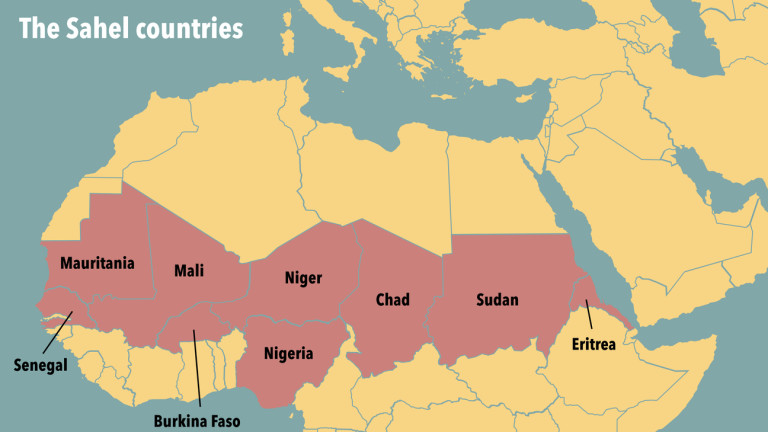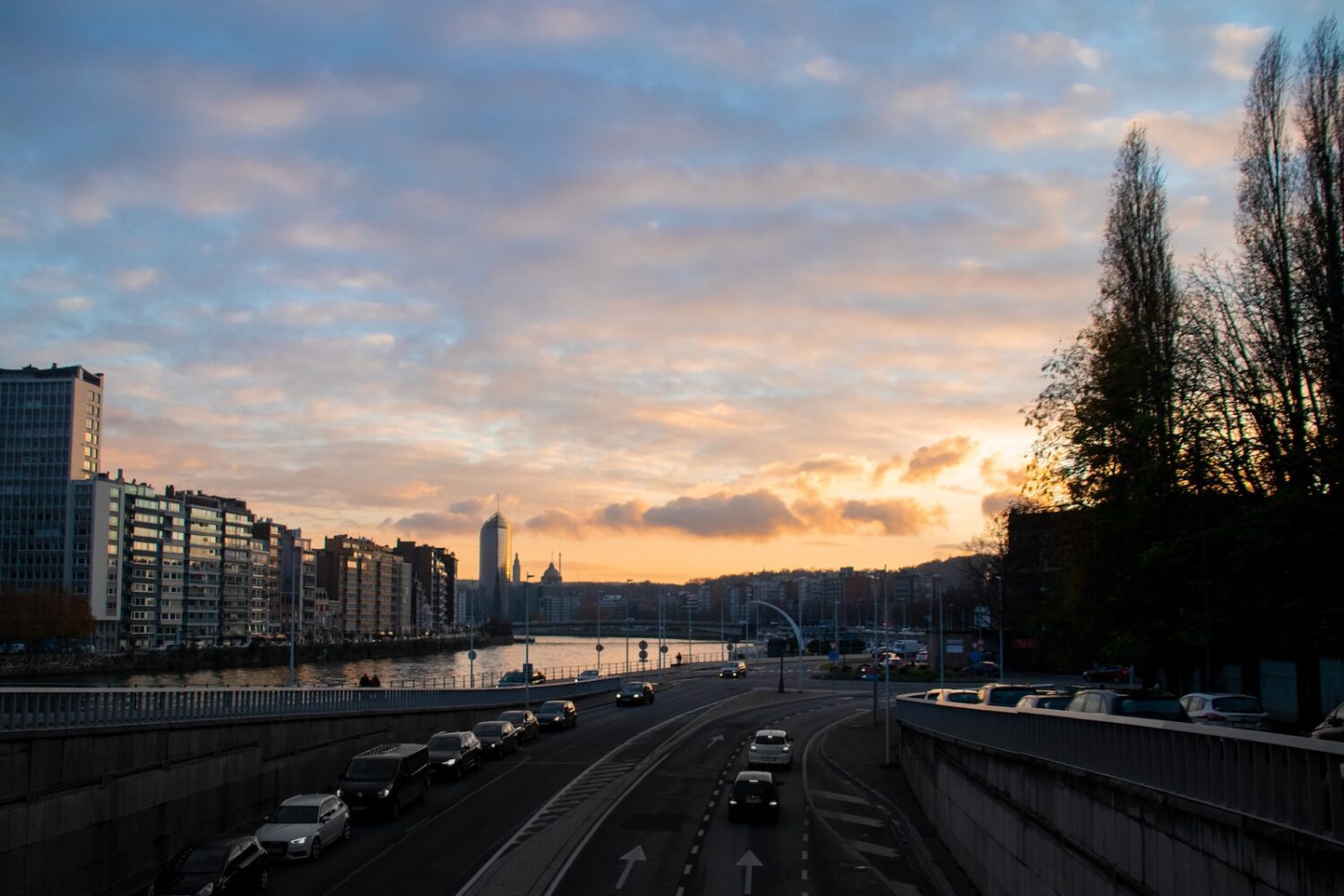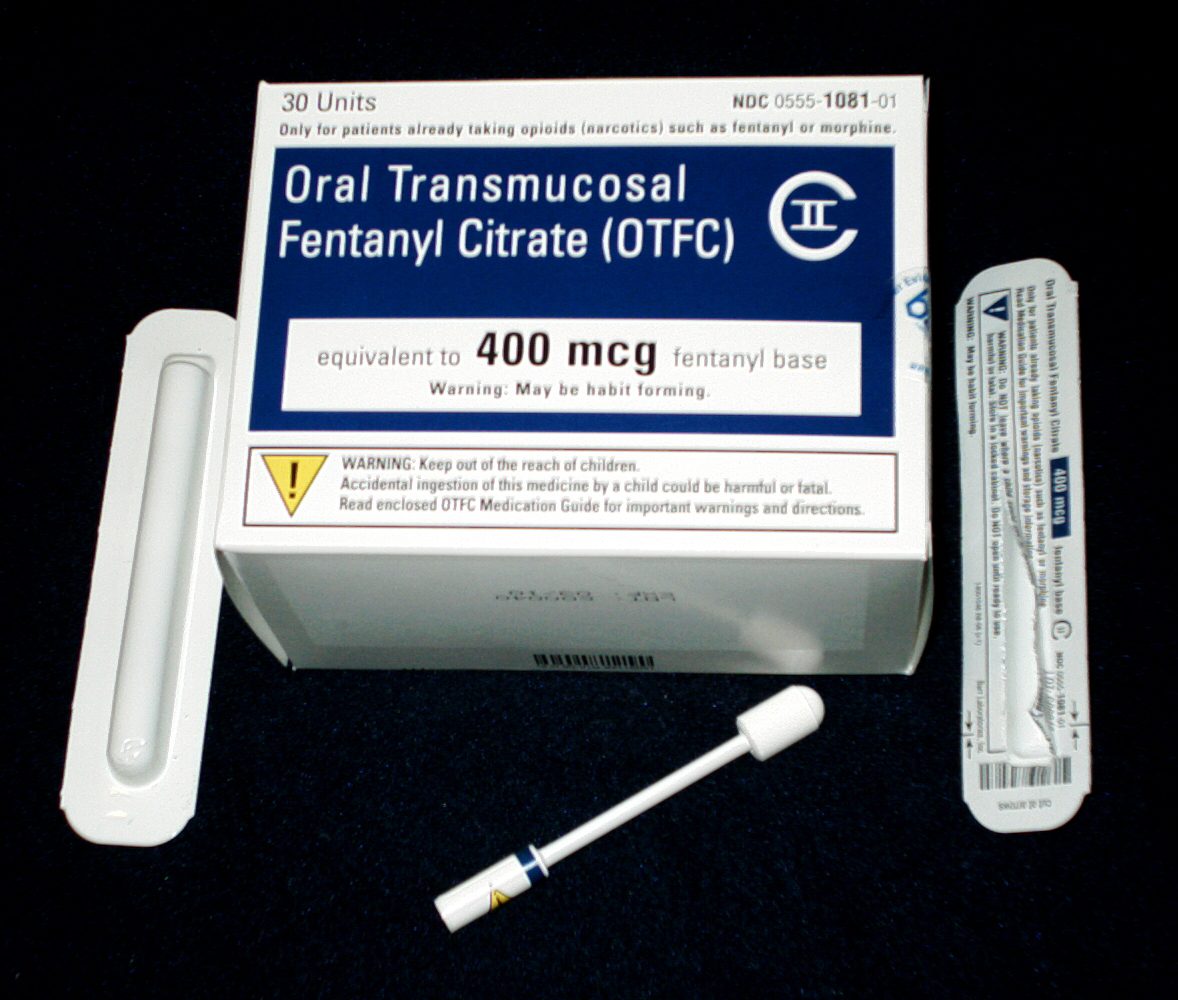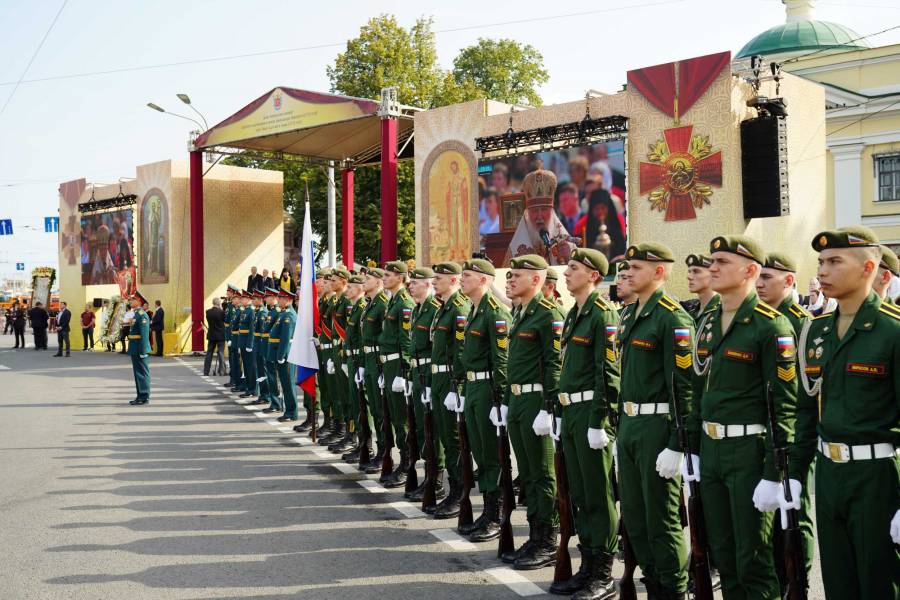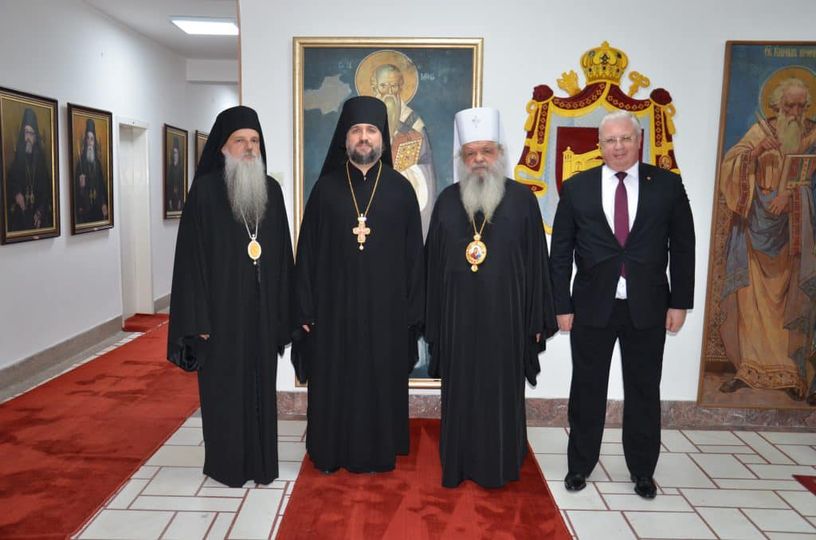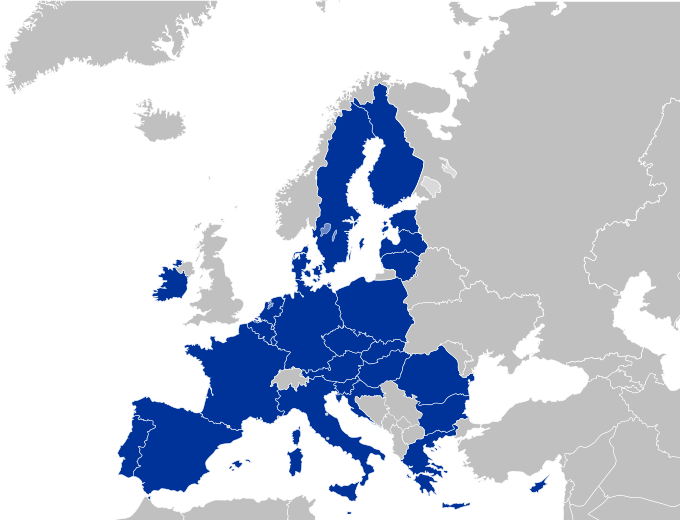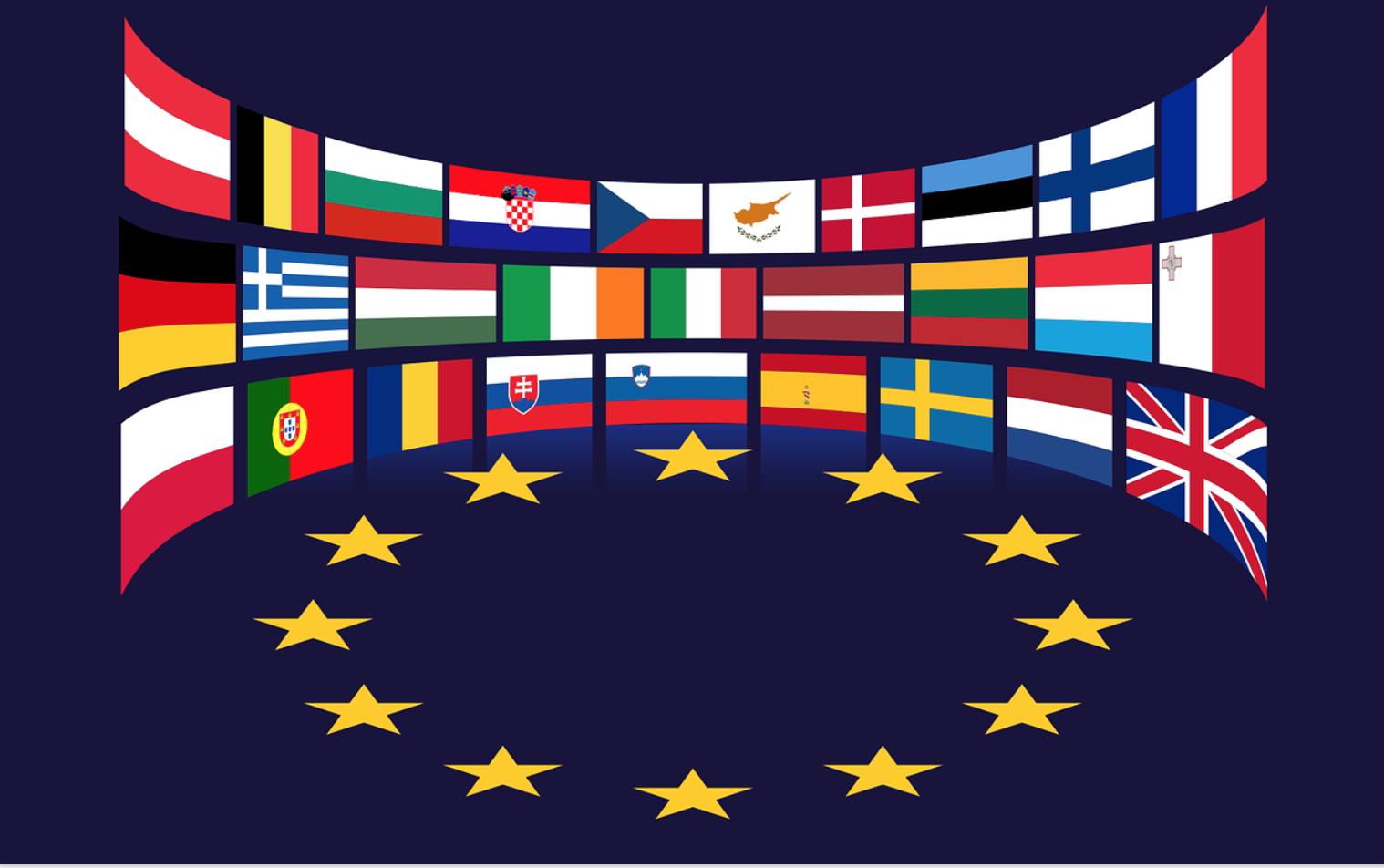Violence in the Sahel countries can be link to the participation of the Tuareg armed militias, who are fighting for an independent state
by Teodor Detchev
The beginning of the new cycle of violence in the Sahel countries can be tentatively linked to the Arab Spring. The link isn’t really symbolic and it’s not related to someone’s “inspirational example”. The direct link is related to the participation of the Tuareg armed militias, which for decades have been fighting for the creation of an independent state – mostly in the northern part of Mali. [1]
During the civil war in Libya, during the lifetime of Muammar Gaddafi, the Tuareg militias sided with him, but after his death, they returned to Mali with all their heavy and light weapons. The sudden appearance of much stronger than before Tuareg paramilitaries, who are literally armed to the teeth, is bad news for the authorities in Mali, but also for other countries in the region. The reason is that a transformation has taken place among the Tuareg and some of their armed factions have “rebranded” themselves from fighters for national independence into Uzhkim Islamist militant formations. [2]
This phenomenon, in which ethnocentric formations with a long history, suddenly embrace “jihadi” slogans and practices, the author of these lines calls “double bottom organizations”. Such phenomena are not a specialty of West Africa alone, such is the “God’s Resistance Army” in Uganda, as well as various Islamist armed formations in the southernmost islands of the Philippine archipelago. [2], [3]
Things in West Africa came together in such a way that after 2012-2013, the region became a battleground where “franchises” of global terrorist networks, which to a greater or lesser extent can be called “terrorist” disorganizations”, due to their particular structure, rules and leadership, which are the negation of classical organizations. [1], [2]
In Mali, the Tuareg, newly minted Islamists, in confrontation with al-Qaeda but in alliance with Salafist formations that did not belong to either the Islamic State or al-Qaeda, attempted to create an independent state in northern Mali. [2] In response, the Malian authorities launched a military operation against the Tuareg and jihadists, which was supported by France with a mandate from the UN Security Council – under the so-called UN Stabilization Mission in Mali – Minusma.
Operations Serval and Barhan begin one after the other, Operation Serval is a French military operation in Mali conducted pursuant to Security Council Resolution 2085 of 20 December 2012. The resolution was voted on at the request of the Malian authorities, with no one, including Russia, objecting, let alone a Security Council veto. The goal of the operation with the mandate of the UN is to defeat the forces of the jihadists and the Tuareg “organizations with a double bottom” in the northern part of Mali, which are beginning to make their way to the central part of the country.
In the course of the operation, three of the five leaders of the Islamists were killed – Abdelhamid Abu Zeid, Abdel Krim and Omar Ould Hamaha. Mokhtar Belmokhtar fled to Libya and Iyad ag Ghali escaped to Algeria. Operation Serval (named after the famously lovable African wild cat) ended on 15 July 2014 to be succeeded by Operation Barhan, which began on 1 August 2014.
Operation Barhan is taking place on the territory of five Sahel countries – Burkina Faso, Chad, Mali, Mauritania and Niger. 4,500 French soldiers are participating, and the five countries of the Sahel (G5 – Sahel) are training about 5,000 soldiers to join the anti-terrorist operations.
The attempt to secede the northern part of Mali into some kind of Tuareg-Islamist state failed. Operations “Serval” and “Barkhan” are achieving their immediate objectives. The ambitions of Islamists and “double bottom organizations” are over. The bad thing is that this does not put an end to the violence and, accordingly, to the hostilities in the Sahel. Although defeated and forced to think first and foremost about how to hide from the forces of France and the G5-Sahel countries, the Islamic radicals are turning to guerrilla warfare, turning at times into simple banditry.
Although after the Serwal and Barkhan operations, the Islamic radicals are no longer able to achieve any strategic successes, at least at first sight, the number of attacks against civilians is not decreasing, but in certain places is increasing. This creates an extremely nervous and unhealthy environment, which is taken advantage of by ambitious military men who do not share the view that the army belongs in the barracks.
On the one hand, the African army is a social elevator. It enables a person to rise to some kind of meritocratic principle. On the other hand, the practice of military coups in Africa is so widespread that aspiring army commanders do not seem to consider it a crime at all.
As STATISTA data shows, between January 1950 and July 2023 there were about 220 successful and failed coup attempts in Africa, accounting for almost half (44 percent of all coup attempts in the world. Including failed attempts, Sudan tops the list of African countries with the most coups since 1950 with a total of 17. After Sudan, Burundi (11), Ghana and Sierra Leone (10) are the countries with the most coup attempts since the mid-20th century.
In today’s situation in the Sahel, following the initial advance of radical Islamists and “double bottom organizations” in northern Mali and the corresponding counterattack by the armed forces of the G5 Sahel countries and France, the main concern is personal security of people. Some citizens of different countries in the region share similar feelings, which can be summed up in the aphorism of a citizen of Burkina Faso: “During the day we tremble lest the military from the regular army come, and at night we tremble lest the Islamists come.”
It is precisely this situation that gives courage to certain circles among the military to reach for power. This is basically justified by the thesis that the current government does not cope with the terror imposed by Islamic radicals. It should be noted that the moment was chosen quite precisely – on the one hand, the jihadists are defeated and their ability to permanently seize territories is not so great. At the same time, attacks by Islamic radicals remain very dangerous and deadly for many civilians. Thus, the military in some countries take advantage of the work done by the UN and G5 Sahel forces against troublemakers and at the same time (quite hypocritically) raise the issue that their territories are not pacified and their “competence” is needed intervention.
One might argue that at one point Burkina Faso, where the authorities are believed to have secure control of just 60 percent of the country’s territory as of early 2022, has proved to be an exception. [40] This is true, but only in parts. It should be clear that Islamic radicals do not exercise control over the remaining 40 percent of the territory in the sense that the word “control” could be used under the Islamic State in Syria and Iraq or the attempt to secede the northern Tuareg-populated part slow down. There is no local administration here that has been installed by the Islamists, and no de facto control at least over basic communications. It’s just that the rebels can commit crimes with relative impunity, and that’s why critics of the government at the time (and probably the current one as well) believe that this part of the country’s territory is not under the control of the authorities. [9], [17], [40]
In any case, the undeniably extremely painful issue of constant attacks by Islamic radicals has given moral justification (at least in their own eyes) for the military in some Sahel countries to take power by force, justifying their actions with concern for the security of the people. The last such coup to hit the region was the coup d’état in Niger, where General Abdurahman Tiani seized power on 26 July 2023. [22]
It is important to say here that the coup in Gabon, which is arguably the most recent possible coup in West Africa, cannot be seen in the same context as that created by the processes taking place in the Sahel countries. [10], [14] Unlike Mali, Burkina Faso, Niger, and Chad, there is no hostilities between government forces and Islamic radicals in Gabon, and the coup is aimed, at least for now, against the presidential family, the Bongo family, who already rule Gabon 56 years.
Anyway, it should be emphasized that after the period of relative calm between 2013 and 2020, there were 13 coup attempts in Africa, including in Sudan, Chad, Guinea, Burkina Faso and Mali. [4], [32]
Here we have to point out as somewhat related to the current new maelstrom of political instability in West Africa, particularly in the Sahel, the ongoing violence in the Central African Republic (CAR), where two civil wars have been fought back-to-back. The first, known as the Central African Republic Bush War, began in 2004 and ended formally with a de jure peace agreement in 2007, and de facto in March 2013. The second, known as the “civil war in the Central African Republic” (Central African Republic Civil War), began in April 2013 and has not ended to this day, although government troops have now laid hands on the largest part of the territory of the country they once controlled.
Needless to say, a country that is extremely poor, its human development index is at the lowest possible levels of the ranking (the last place, at least until 2021 was reserved for Niger) and the risk of undertaking any economic activity is extremely high, is practically a “failed state” and sooner or later becomes prey to various political and military vultures. To this category we can in good conscience refer Mali, Burkina Faso, Niger, the Central African Republic (CAR) and South Sudan from the group of countries considered in this analysis.
At the same time, the list of countries in Africa where the Russian private military company Wagner has been confirmed to have a noticeable and government-agreed presence includes Mali, Algeria, Libya, Sudan, South Sudan, CAR, Cameroon, DR Congo, Zimbabwe, Mozambique and Madagascar. [4], [39]
A comparison between the list of “failed states” ravaged by civil wars, ethnic and religious conflicts, military coups and other such misfortunes and the list of countries where PMC Wagner mercenaries “work” ostensibly in favor of legitimate governments shows a remarkable coincidence.
Mali, the Central African Republic and South Sudan feature prominently on both lists. There is still no confirmed data on the official presence of PMC “Wagner” in Burkina Faso, but there are enough indications of Russian intervention and support in favor of the latest coup plotters in the country, not to mention the rampant pro-Russian sentiments, already to the fact that the mercenaries of the late Prigozhin had already managed to “distinguish themselves” in the neighboring country of Mali. [9], [17]
In fact, PMC Wagner’s “appearances” in the Central African Republic and in Mali should rather cause horror among Africans. Russian mercenaries’ penchant for mass slaughter and brutality have been public since the Syrian period in their appearances, but their exploits in Africa, especially in the aforementioned CAR and Mali, are also well documented. [34] At the end of July 2022, the commander of French forces in the UN-flagged Operation Barhan, General Laurent Michon, directly accused PMC Wagner of “looting Mali”. [24]
In fact, as already mentioned above, the events in Mali and Burkina Faso are connected and follow the same pattern. The “contagion” of radical Islamist violence started in Mali. It went through a Tuareg-Islamist insurgency in the north of the country and, after the defeat of the rebels by the UN forces and the G5 – Sahel, then took the form of guerrilla warfare, violence against the civilian population and outright banditry in the middle part of Mali, where he sought the support of the Fulani or Fulbe people (a very important issue that will be analyzed in detail later) and moved to Burkina Faso. Analysts even talked about Burkina Faso becoming the “new epicenter of violence”. [17]
However, an important detail is that in August 2020, a military coup overthrew the elected president of Mali – Ibrahim Boubacar Keïta. This had a bad effect on the fight against the jihadists, because the military that came to power looked with distrust on the UN force, which consisted mainly of French soldiers. They rightly suspected that the French did not approve of the military coup. That is why the new, self-appointed authorities in Mali hastened to demand the termination of UN operations (especially the French) in Mali. At that very moment, the country’s military rulers were more afraid of the UN-mandated French forces on their territory than of Islamic radicals.
The UN Security Council ended the peacekeeping operation in Mali very quickly and the French began to withdraw, apparently without much regret. Then the military junta in Bamako remembered that the guerilla war of the Islamic radicals had not ended at all and sought other external help, which appeared in the form of PMC “Wagner” and the Russian Federation, which is always ready to serve like-minded statesmen. Events developed very quickly and PMC “Wagner” left deep footprints of its shoes in the sands of Mali. [34], [39]
The coup in Mali triggered the “domino effect” – two coups followed in one year in Burkina Faso (!), and then in Niger and Gabon. The pattern and motivations (or rather justifications) for carrying out the coups in Burkina Faso were identical to those in Mali. After 2015, violence, sabotage and armed attacks by Islamic radicals increased sharply. The various “franchises” of al-Qaeda, the Islamic State (the Islamic State of West Africa, the Islamic State of the Greater Sahara, etc.) and independent Salafist formations have killed thousands of civilians, and the number of “internally displaced”, you understand – refugees has exceeded two million people. Thus, Burkina Faso acquired the dubious reputation of being “the new epicenter of the Sahel conflict.” [9]
On January 24, 2022, the military in Burkina Faso, led by Paul-Henri Damiba, overthrew President Roch Kabore, who had ruled the country for six years, after several days of rioting in the capital, Ouagadougou. [9], [17], [32] But on September 30, 2022, for the second time in the same year, another coup was carried out. The self-appointed president Paul-Henri Damiba was overthrown by the equally ambitious captain Ibrahim Traore. After ousting the current president, Traore also dissolved the transitional government created by Damiba and suspended (finally) the constitution. In no uncertain terms, the army spokesman said that a group of officers had decided to remove Damiba because of his inability to deal with the armed insurgency of Islamic radicals. That he belongs to the same institution that has failed to deal with jihadists under two successive presidents for about seven years does not faze him at all. Moreover, he openly states that “in the last nine months” (that is, right after the military coup in January 2022 with his participation), “the situation has worsened”. [9]
In general, a model of violent seizure of power is being created in countries where there is an intensification of the subversive work of Islamic radicals. Once the UN forces (understand the “bad” French and the G5 – Sahel troops) break the offensive drive of the jihadists and the fighting remains in the sphere of guerilla warfare, sabotage and attacks on the civilian population, the local military in a given country considers that its hour has struck; it is said that the fight against radical Islamists is not successful and … takes power.
Undoubtedly, a comfortable situation – the Islamic radicals no longer have the strength to enter your capital and establish some form of “Islamic State” for you, and at the same time, the fighting is far from over and there is something to scare the population. A separate issue is that a large part of the population is afraid of their “native” army for a number of reasons. They range from the irresponsibility of army commanders to disparities in the tribal affiliation of the same generals.
To all this, the frank horror of the methods of “Wagner”, who are supporters of “radical actions” and “industrial logging”, has already been added. [39]
It is here that we must leave for a moment the long flight over the history of the Islamic penetration into West Africa and pay attention to a coincidence that is most likely not accidental. In search of human resources for their cause, especially after being largely abandoned by the Tuareg militias following the failure of the insurgency in northern Mali, Islamic radicals are turning to the Fulani, a semi-nomadic people of hereditary herders who engage in migratory pastoralism in a belt from the Gulf of Guinea to the Red Sea, south of the Sahara desert.
The Fulani (also known as Fula, Fulbe, Hilani, Philata, Fulau, and even Pyol, depending on which of the many languages spoken in the region) are one of the first African peoples to convert to Islam and by virtue of their lifestyle and livelihood are to a certain extent marginalized and discriminated against. In fact, the geographical distribution of the Fulani looks like this:
The Fulani number approximately 16,800,000 in Nigeria out of a total population of 190 million; 4,900,000 in Guinea (with capital Conakry) out of 13 million inhabitants); 3,500,000 in Senegal out of a country of 16 million; 3,000,000 in Mali out of 18.5 million inhabitants; 2,900,000 in Cameroon out of 24 million inhabitants; 1,600,000 in Niger out of 21 million inhabitants; 1,260,000 in Mauritania out of 4.2 million inhabitants; 1,200,000 in Burkina Faso (Upper Volta) out of a population of 19 million; 580,000 in Chad out of a population of 15 million; 320,000 in The Gambia out of a population of 2 million; 320,000 in Guinea-Bissau out of a population of 1.9 million; 310,000 in Sierra Leone out of a population of 6.2 million; 250,000 in the Central African Republic of 5.4 million inhabitants (with researchers stressing that this is half of the country’s Muslim population, which in turn is about 10% of the population); 4,600 in Ghana out of a population of 28 million; and 1,800 in Côte d’Ivoire out of a population of 23.5 million. [38] A Fulani community has also been established in Sudan along the pilgrimage route to Mecca. Unfortunately, the Sudanese Fulani are the least studied community and their numbers was not assessed during official censuses.[38]
As a percentage of the population, the Fulani make up 38% of the population in Guinea (with capital Conakry), 30% in Mauritania, 22% in Senegal, just under 17% in Guinea-Bissau, 16% in Mali and Gambia, 12% in Cameroon, almost 9% in Nigeria, 7.6% in Niger, 6.3% in Burkina Faso, 5% in Sierra Leone and the Central African Republic, just under 4% of the population in Chad and very small shares in Ghana and Côte d’Ivoire Ivory. [38]
Several times in history, the Fulani have created empires. Three examples can be cited:
• In the 18th century, they established the theocratic state of Futa-Jalon in Central Guinea;
• In the 19th century, the Massina Empire in Mali (1818 – 1862), established by Sekou Amadou Barii, then Amadou Sekou Amadou, who succeeded in conquering the great city of Timbuktu.
• Also in the 19th century, the Sokoto Empire was established in Nigeria.
These empires proved to be unstable state entities, however, and today, there is no state that is controlled by the Fulani. [38]
As already noted, traditionally the Fulani are migratory, semi-nomadic pastoralists. They have remained so for the most part, even if it is considered that a number of them have gradually become settled, both because of the limitations imposed on them by the continuous expansion of the desert in certain regions, and because of their dispersion, and because some governments have created programs aimed at guiding the nomadic population to a sedentary lifestyle. [7], [8], [11], [19], [21], [23], [25], [42]
The vast majority of them are Muslims, almost all of them in a number of countries. Historically, they played an important role in the penetration of Islam into West Africa.
The Malian writer and thinker Amadou Hampate Bâ (1900-1991), who himself belongs to the Fulani people, recalling the way in which they are perceived by other communities, makes a comparison with the Jews, as much as the Jews before the creation of Israel , they have been dispersed in many countries, where they generate repeated insults from other communities, which do not vary much from country to country: the Fulani are often perceived by others as prone to communitarianism, nepotism and treachery. [38]
The traditional conflicts in the migration areas of the Fulani, between them, on the one hand, as semi-nomadic herders and settled farmers of different ethnic groups, on the other, and the fact that they are more present than other ethnic groups in a large number of countries (and therefore in contact with different groups of the population), doubtless contribute to the explanation of this reputation, too often maintained by the population with which they entered into opposition and dispute. [8], [19], [23], [25], [38]
The idea that they are pre-emptively developing vectors of jihadism is much more recent and can be explained by the role of the Fulani in the noted not so long ago rise of terrorism in the central part of Mali – in the Masina region and in the bend of the Niger River . [26], [28], [36], [41]
When talking about the emerging points of contact between the Fulani and the “Jihadists”, it must always be borne in mind that historically throughout Africa, conflicts have arisen and continue to exist between settled farmers and pastoralists, who are usually nomadic or semi-nomadic and have the practice of migrating and moving with their herds. Farmers accuse cattle herders of ravaging their crops with their herds, and herders complain of livestock theft, difficult access to water bodies and hindrances to their movement. [38]
But since 2010, the increasingly numerous and deadly conflicts have taken on a completely different dimension, especially in the Sahel region. Hand-to-hand combat and club fights have been replaced by shooting with Kalashnikov assault rifles. [5], [7], [8], [41]
The continuous expansion of agricultural land, imposed by very rapid population growth, gradually limits the areas for grazing and animal husbandry. Meanwhile, severe droughts in the 1970s and 1980s prompted herders to migrate south to areas where settled people were unaccustomed to competing with nomads. In addition, the priority given to policies for the development of intensive animal husbandry tend to marginalize nomads. [12], [38]
Left out of development policies, migrant pastoralists often feel discriminated against by the authorities, feel that they live in a hostile environment and mobilize to protect their interests. In addition, terrorist groups and militias fighting in West and Central Africa are trying to use their frustration to win them over. [7], [10], [12], [14], [25], [26]
At the same time, the majority of pastoral nomads in the region are Fulani, who are also the only nomads to be found in all countries of the region.
The nature of some of the Fulani empires mentioned above, as well as the distinct warlike tradition of the Fulani, has led many observers to believe that Fulani involvement in the emergence of terrorist jihadism in central Mali since 2015 is in some sense a combined product of the historical heritage and identity of the Fulani people, who are presented as the bête noire (“black beast”). The participation of the Fulani in the growth of this terrorist threat in Burkina Faso or even in Niger seems to confirm this view. [30], [38]
When talking about the historical legacy, it should be noted that the Fulani played an important role in the resistance against French colonialism, especially in Futa-Jalon and the surrounding regions – the territories that would become the French colonies of Guinea, Senegal and French Sudan.
Furthermore, the important distinction must be made that while the Fulani played an important role in the creation of a new terrorist center in Burkina Faso, the situation in Niger is different: it is true that there are periodic attacks by groups composed of Fulani, but these are external attackers. coming from Mali. [30], [38]
In practice, however, the situation of the Fulani varies greatly from country to country, whether it is their way of life (degree of settlement, level of education, etc.), the way they perceive themselves, or even the way , according to which they are perceived by others.
Before proceeding with a more in-depth analysis of the various modes of interaction between the Fulani and the jihadists, a significant coincidence should be noted, to which we will return towards the end of this analysis. It was stated that the Fulani live scattered in Africa – from the Gulf of Guinea on the Atlantic Ocean in the west, to the shores of the Red Sea in the east. They live practically along one of the most ancient trade routes in Africa – the route running immediately along the southern edge of the Sahara desert, which to this day is also one of the most important routes along which migratory agriculture takes place in the Sahel .
If, on the other hand, we look at the map of the countries where PMC “Wagner” carries out official activities, in aid of the relevant government forces (regardless of whether the government is at all legal or came to power as a result of a recent coup – see especially Mali and Burkina Faso ), we will see that there is a serious overlap between the countries where the Fulani reside and where the “Wagnerovites” operate.
On the one hand, this can be attributed to coincidence. PMC “Wagner” relatively successfully parasitises countries where there are severe internal conflicts, and if they are civil wars – even better. With Prigozhin or without Prigozhin (some people still consider him alive), PMC “Wagner” will not budge from its positions. Firstly, because it has to fulfill contracts for which money has been taken, and secondly, because such is the geopolitical mandate of the central government in the Russian Federation.
There is no greater falsification than the declaration of “Wagner” as a “private military company” – PMC. One would rightly ask what is “private” about a company that was created at the behest of the central government, armed by it, assigned tasks of prime importance (first in Syria, then elsewhere), provides it is “personal staff”, through the parole of prisoners with heavy sentences. With such “service” by the state, it is more than misleading, it is downright perverse, to call “Wagner” a “private company”.
PMC “Wagner” is an instrument of the realization of Putin’s geopolitical ambitions and is responsible for the penetration of “Russky Mir” in places where it is not “hygienic” for the regular Russian army to appear in all its parade official form. The company usually appears where there is great political instability to offer its services like a modern-day Mephistopheles. The Fulani have the misfortune of living in places where political instability is very high, so at first glance their clash with PMC Wagner should not come as a surprise.
On the other hand, however, the opposite is also true. “Wagner” PMCs extremely methodically “moved” along the route of the already mentioned ancient trade route – today’s key migratory cattle-breeding route, part of which even coincides with the route of many African nations for the Hajj in Mecca. The Fulani are about thirty million people and if they are radicalized, they could cause a conflict that would have the character of at least an all-African war.
Up to this point in our time, countless regional wars have been fought in Africa with huge casualties and incalculable damage and destruction. But there are at least two wars that claim the albeit unofficial labels of “African world wars”, in other words – wars that involved a large number of countries on the continent and beyond. These are the two wars in the Congo (today’s Democratic Republic of the Congo). The first lasted from October 24, 1996 to May 16, 1997 (more than six months) and led to the replacement of the dictator of the then country of Zaire – Mobuto Sese Seko with Laurent-Désiré Kabila. 18 countries and paramilitary organizations are directly involved in the hostilities, supported by 3 + 6 countries, some of which are not completely open. The war was also to some extent triggered by the genocide in neighboring Rwanda, which led to a wave of refugees in the DR Congo (then Zaire).
As soon as the First Congo War ended, the victorious Allies came into conflict with each other and it quickly turned into the Second Congo War, also known as the “Great African War”, which lasted almost five years, from August 2, 1998 to July 18, 2003. The number of paramilitary organizations involved in this war is almost impossible to ascertain, but suffice it to say that on the side of Laurent-Désiré Kabila are fighting contingents from Angola, Chad, Namibia, Zimbabwe and Sudan, while against the regime in Kinshasa are Uganda, Rwanda and Burundi. As researchers always emphasize, some of the “helpers” intervene completely uninvited.
In the course of the war, the president of the DR Congo, Laurent-Désiré Kabila, died and was replaced by Joseph Kabila. Besides all the possible cruelty and destruction, the war is also remembered for the total extermination of 60,000 pygmy civilians (!), as well as about 10,000 pygmy warriors. The war ended with an agreement that saw the formal withdrawal of all foreign forces from DR Congo, the appointment of Joseph Kabila as interim president, and the swearing in of four pre-agreed vice presidents, depending on the interests of all warring parties. In 2006, general elections were held, as they might be held in a Central African country that has experienced two consecutive intercontinental wars within more than six years.
The example of the two wars in the Congo can give us some rough idea of what could happen if a war was ignited in the Sahel involving the 30 million Fulani people. We cannot doubt that a similar scenario has long been considered in the countries of the region, and especially in Moscow, where they probably think that with the engagements of PMC “Wagner” in Mali, Algeria, Libya, Sudan, South Sudan, CAR and Cameroon ( as well as in the DR Congo, Zimbabwe, Mozambique and Madagascar), they “keep their hand on the counter” of a large-scale conflict that could be provoked out of necessity.
Moscow’s ambitions to be a factor in Africa are not from yesterday at all. In the USSR, there was an exceptionally prepared school of intelligence officers, diplomats and, above all, military specialists who were ready to intervene in one or another region of the continent if necessary. A large part of the countries in Africa were mapped by the Soviet General Administration of Geodesy and Cartography (back in 1879 – 1928) and the “Wagners” can count on very good information support.
There are strong indications of strong Russian influence in carrying out the coups in Mali and Burkina Faso. At this stage, there are no allegations of Russian involvement in the Niger coup, with US Secretary of State Blinken personally dismissing such a possibility. The latter, of course, does not mean at all that during his lifetime Prigozhin did not welcome the coup plotters and did not offer the services of his “private” military company.
In the spirit of the former Marxist traditions, here too Russia operates with a minimum program and a maximum program. The minimum is to “set foot” in more countries, seize “outposts”, create influence among local elites, especially among the military, and exploit as many valuable local minerals as possible. PMC “Wagner” has already achieved results in this regard.
The maximum program is to gain control over the entire Sahel region and let Moscow decide what will happen there – peace or war. Someone would reasonably say: “yes, of course – it makes sense to collect the money of the coup governments and dig up as much valuable mineral resources as possible. But what the hell do the Russians need to control the existence of the Sahel countries?”.
The answer to this reasonable question lies in the fact that in the event of a military conflict in the Sahel, flows of refugees will rush to Europe. These will be masses of people that cannot be contained by police forces alone. We will witness scenes and ugly sights with a huge propaganda charge. Most likely, European countries will try to accept part of the refugees, at the expense of detaining others in Africa, who will have to be supported by the EU due to their complete defenselessness.
For Moscow, all this would be a paradisiacal scenario that Moscow would not hesitate to set in motion at a given moment, if given the opportunity. It is clear that the capacity of France to play the role of a major peacekeeping force is in question, and also in question is the desire of France to continue to perform such functions, especially after the case in Mali and the termination of the UN mission there. In Moscow, they are not worried about carrying out nuclear blackmail, but what is left for detonating a “migration bomb”, in which there is no radioactive radiation, but the effect can still be devastating.
Precisely for these reasons, the processes in the Sahel countries should be followed and studied in depth, including by Bulgarian scientists and specialists. Bulgaria is at the forefront of the migration crisis and the authorities in our country are obliged to exert the necessary influence on the policy of EU in order to be prepared for such “contingencies”.
Part two follows
Sources used:
[1] Detchev, Teodor Danailov, The Rise of Global Terrorist Disorganizations. Terrorist franchising and rebranding of terrorist groups, Jubilee collection in honor of the 90th anniversary of Prof. D.I.N. Toncho Trandafilov, VUSI Publishing House, pp. 192 – 201 (in Bulgarian).
[2] Detchev, Teodor Danailov, “Double bottom” or “schizophrenic bifurcation”? The interaction between ethno-nationalist and religious-extremist motives in the activities of some terrorist groups, Sp. Politics and Security; Year I; no. 2; 2017; pp. 34 – 51, ISSN 2535-0358 (in Bulgarian).
[3] Detchev, Teodor Danailov, Terrorist “franchises” of the Islamic State seize bridgeheads in the Philippines. The environment of the Mindanao island group offers excellent conditions for the strengthening and growth of terrorist groups with a “double bottom”, Research Papers of the Graduate School of Security and Economics; Volume III; 2017; pp. 7 – 31, ISSN 2367-8526 (in Bulgarian).
[4] Fleck, Anna, A renewed wave of coups in Africa?, 03/08/2023, blacksea-caspia (in Bulgarian).
[5] Ajala, Olayinka, New drivers of conflict in Nigeria: an analysis of the clashes between farmers and pastoralists, Third World Quarterly, Volume 41, 2020, Issue 12, (published online 09 September 2020), pp. 2048-2066
[6] Benjaminsen, Tor A. and Boubacar Ba, Fulani-Dogon killings in Mali: Farmer-Herder Conflicts as Insurgency and Counterinsurgency, African Security, Vol. 14, 2021, Issue 1, (Published online: 13 May 2021)
[7] Boukhars, Anouar and Carl Pilgrim, In Disorder, they Thrive: How Rural Distress Fuels Militancy and Banditry in the Central Sahel, March 20, 2023, Middle East Institute
[8] Brottem, Leif and Andrew McDonnell, Pastoralism and Conflict in the Sudano-Sahel: A Review of the Literature, 2020, Search for Common Ground
[9] Burkina Faso”s coup and political situation: All you need to know, October 5, 2022, Al Jazeera
[10] Cherbib, Hamza, Jihadism in the Sahel: Exploiting Local Disorders, IEMed Mediterranean Yearbook 2018, European Institute of the Mediterranean (IEMed)
[11] Cissé, Modibo Ghaly, Understanding Fulani Perspectives on the Sahel Crisis, April 22, 2020, Africa Center for Strategic Studies
[12] Clarkson, Alexander, Scapegoating the Fulani is Fueling the Sahel”s Cycle of Violance, July 19, 2023, World Political Review (WPR)
[13] Climate, Peace and Security Fact Sheet: Sahel, April 1, 2021, JSTOR, Norwegian Institute of International Affairs (NUPI)
[14] Cline, Lawrence E., Jihadist Movements in the Sahel: Rise of the Fulani?, March 2021, Terrorism and Political Violence, 35 (1), pp. 1-17
[15] Cold-Raynkilde, Signe Marie and Boubacar Ba, Unpacking “new climate wars”: Actors and drivers of conflict in the Sahel, DIIS – Danish Institute for International Studies, DIIS REPORT 2022: 04
[16] Courtright, James, Ethnic Killings by West African Armies are Undermining Regional Security. By joining hands with militias that target Fulani civilians, state forces risk sparking a wider conflict, March 7, 2023, Foreign Policy
[17] Durmaz, Mucahid, How Burkina Faso became the epicentre of conflict in the Sahel. Casualities in the West Africa state are eclipsing those in its neighbour mali, the birthplace of the conflict, 11 March 2022, Al Jazeera
[18] Equizi, Massimo, The true role of ethnicity in Sahelian herder-farmer conflicts, January 20, 2023, PASRES – Pastoralism, Uncertinity, Resilience
[19] Ezenwa, Olumba E. and Thomas Stubbs, Herder-farmer conflict in the Sahel needs a new description: why “eco-violance” fits, July 12, 2022, The Conversation
[20] Ezenwa, Olumba, What”s in a Name? Making the Case for the Sahel Conflict as “Eco-violance, July 15, 2022
[21] Ezenwa, Olumba E., Nigeria”s deadly conflicts over water and grazing pasture are escalating – here”s why, Smart Water Magazine, November 4, 2022
[22] Fact Sheet: Military Coup in Niger, 3 August 2023, ACLED
[23] Farmer-Herder Conflict between Fulani and Zarma in Niger, Climate Diplomacy. 2014
[24] French Commander Accuses Wagner of “Preying” on Mali, Author – Staff writer with the AFP, The Defense Post, July 22, 2022
[25] Gaye, Sergine-Bamba, Conflicts between farmers and herders against a backdrop of asymmetric threats in Mali and Burkina Faso, 2018, Friedrich Ebert Stiftung Peace and Security Centre of Competence Sub-Saharan Africa, ISBN: 978-2-490093-07-6
[26] Higazy, Adam and Shidiki Abubakar Ali, Pastoralism and Security in West Africa and the Sahel. Towards Peaceful coexistence, August 2018, UNOWAS Study
[27] Hunter, Ben and Eric Humphery-Smith, Sahel”s downward spiral fuelled by weak governance, climate change, 3 November 2022, Verisk Maplecroft
[28] Jones, Melinda, The Sahel Faces 3 Issues: Climate, Conflict and Overpopulation, 2021, Vision of Humanity, IEP
[29] Kindzeka, Moki Edwin, Cameroon Hosted Sahel Cross-Boundary Pastoralists Forum Proposes Peacekeeping, July 12, 2023, VOA – Africa
[30] McGregor, Andrew, The Fulani Crisis: Communal Violance and Radicalization in the Sahel, CTC Sentinel, February 2017, Vol. 10, Issue 2, Combating Terrorism Center at West Point
[31] Mediation of local conflicts in the Sahel. Butkina Faso, Mali and Niger, Centre for Humanitarian Dialogue (HD), 2022
[32] Moderan, Ornella and Fahiraman Rodrigue Koné, Who caused the coup in Burkina Faso, February 03, 2022, Institute for Security Studies
[33] Moritz, Mark and Mamediarra Mbake, The danger of a single story about Fulani pastoralists, Pastoralism, Vol. 12, Article number: 14, 2022 (Published: 23 March 2022)
[34] Moving Out of the Shadows: Shifts in Wagner Group Operations Around the World, 2 August 2023, ACLED
[35] Olumba, Ezenwa, We need a new way of understanding violence in the Sahel, February 28th, 2023, London School of Economics Blogs
[36] Populations at Risk: Central Sahel (Burkina Faso, Mali and Niger), 31 May 2023, Global Centre for the Responsibility to Protect
[37] Sahel 2021: Communal Wars, Broken Ceasefires and Shifting Frontiers, 17 June 2021, ACLED
[38] Sangare, Boukary, Fulani people and Jihadism in Sahel and West African countries, February 8, 2019, Observatoire of Arab-Muslim World and Sahel, The Fondation pour la recherche stratégique (FRS)
[39] The Soufan Center Special Report, Wagner Group: The Evolution of a Private Army, Jason Blazakis, Colin P. Clarke, Naureen Chowdhury Fink, Sean Steinberg, The Soufan Center, June 2023
[40] Understanding Burkina Faso”s Latest Coup, By the Africa Center for Strategic Studies, October 28, 2022
[41] Violent Extremism in the Sahel, August 10, 2023, by the Center for Preventive Action, Global Conflict Tracker
[42] Waicanjo, Charles, Transnational Herder-Farmer Conflicts and Social Instability in the Sahel, May 21, 2020, African Liberty
[43] Wilkins, Henry, By Lake Chad, Fulani Women Make Maps That Reduce Farmer – Herder Conflicts; July 07, 2023, VOA – Africa
About the author:
Teodor Detchev has been a full-time associate professor at the Higher School of Security and Economics (VUSI) – Plovdiv (Bulgaria) since 2016.
He taught at New Bulgarian University – Sofia and at VTU “St. St. Cyril and Methodius”. He currently teaches at VUSI, as well as at UNSS. His main teaching courses are: Industrial relations and security, European industrial relations, Economic sociology (in English and Bulgarian), Ethnosociology, Ethno-political and national conflicts, Terrorism and political assassinations – political and sociological problems, Effective development of organizations.
He is the author of more than 35 scientific works on fire resistance of building structures and resistance of cylindrical steel shells. He is the author of over 40 works on sociology, political science and industrial relations, including the monographs: Industrial relations and security – part 1. Social concessions in collective bargaining (2015); Institutional Interaction and Industrial Relations (2012); Social Dialogue in the Private Security Sector (2006); “Flexible Forms of Work” and (Post) Industrial Relations in Central and Eastern Europe (2006).
He co-authored the books: Innovations in collective bargaining. European and Bulgarian aspects; Bulgarian employers and women at work; Social Dialogue and Employment of Women in the Field of Biomass Utilization in Bulgaria. More recently he has been working on issues of the relationship between industrial relations and security; the development of global terrorist disorganizations; ethnosociological problems, ethnic and ethno-religious conflicts.
Member of the International Labor and Employment Relations Association (ILERA), the American Sociological Association (ASA) and the Bulgarian Association for Political Science (BAPN).
Social democrat by political convictions. In the period 1998 – 2001, he was Deputy Minister of Labor and Social Policy. Editor-in-Chief of the newspaper “Svoboden Narod” from 1993 to 1997. Director of the newspaper “Svoboden Narod” in 2012 – 2013. Deputy Chairman and Chairman of SSI in the period 2003 – 2011. Director of “Industrial Policies” at AIKB since 2014 .to this day. Member of NSTS from 2003 to 2012.



